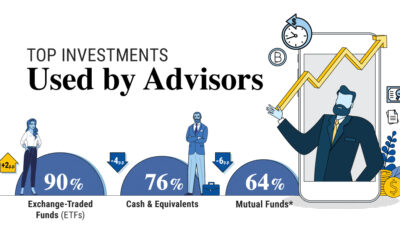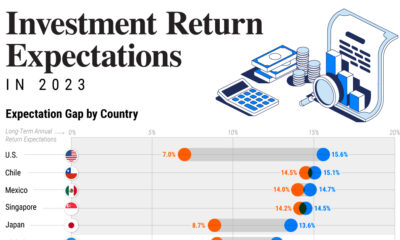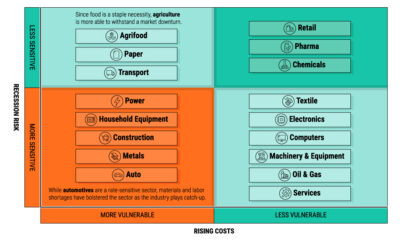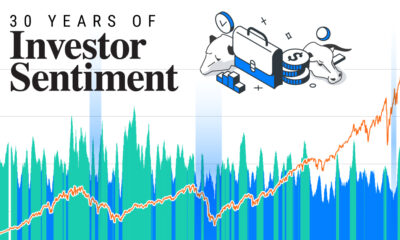This infographic is available as a poster.
What Factors Drive the U.S. Dollar?
In 2022, the U.S. dollar hit 20-year highs as inflation and interest rates rose sharply.
Not only did investors buy U.S. dollars given its role as the world’s reserve currency, but demand for U.S. dollars increased as rising interest rates drove higher returns for the safe-haven currency.
Now, as inflation appears to be easing and lower rate hikes look to be in the cards, the U.S. dollar is cooling. Still, relative to many of the other major global currencies it remains strong.
In the above Markets in a Minute from New York Life Investments, we look at factors that influence the U.S. dollar’s value, and the implications for financial markets and investors.
What Drives the U.S. Dollar?
Importantly, the value of the U.S. dollar is driven by supply and demand factors. During periods of economic uncertainty, investors turn to U.S. dollars because of the underlying strength of the U.S. economy and its role in global financial markets.
Here is a brief overview of some of the key variables that impact the dollar:
| 1. Inflation | 2. Interest Rates | 3. Safe-Haven Status
| 4. Economic Growth
|
High U.S. inflation drives Fed rate hikes.
| Higher interest rates mean higher yields for U.S. dollar investors.
| Investors turn to U.S. dollars during market turmoil.
| Historically, the U.S. has had reliable growth.
|
When U.S. inflation is increasing, it has knock-on effects on interest rates. As the Federal Reserve raises interest rates to fight inflation, it makes the returns of holding the greenback more attractive. This is because global investors look to currencies that generate a higher relative return, accounting for other factors.
Meanwhile, the dollar remains the global reserve currency. Today, roughly half of global trade invoices are in U.S. dollars. Many global corporations and governments borrow in U.S. dollars, while revenues are generated in their local currency.
Alongside this, the liquidity and depth of U.S. financial markets are unmatched. In 2022, 59% of central bank reserves were held in U.S. dollars, indicating strong demand internationally.
U.S. Dollar Trends Over 50 Years
Since the early 1970s when the U.S. dollar delinked from gold, the currency has had three cycles of strength and three weakening cycles.
These trends can be shown through the U.S. Dollar Index or “Dixie” which tracks the value of the dollar against a basket of weighted currencies.
| U.S. Dollar Cycles | U.S. Dollar Index Peak | Year | Annual Inflation Rate | Annual Interest Rate |
| 1980s | 128 | 1985 | 3.6% | 8.1% |
| 1990s - 2000s | 113 | 2002 | 1.6% | 1.7% |
| 2011 - 2020s | 114 | 2022 | 7.1% | 4.0% |
Annual data as of November 2022. Inflation is represented by the Consumer Price Index. Interest rates are represented by the Federal Funds rate.
As the above table shows, the first dollar peak took place in the 1980s as Fed chair Paul Volcker was aggressively hiking interest rates to fight inflation. As interest rates rose, investors flocked to the dollar, pushing it to record highs.
In the second strengthening cycle of the 1990s and 2000s emerging markets were growing at a considerable rate and buying U.S. dollar debt. During this time, a rising dollar hurt emerging market currencies and contributed to the Asian Financial Crisis of the 1990s. Here, currencies with high dollar-denominated debt but low U.S. dollar currency reserves struggled to pay off their debts.
During the Dotcom crash of 2002, the dollar hit its second peak.
The most recent cycle, since 2011, has been the longest strengthening cycle in decades. As the Federal Reserve moved to tighten monetary policy in the mid-2010s, the dollar’s strength accelerated. This has only been more pronounced in 2022 as the Fed hiked rates at the fastest rate in decades.
Weighing the Global Impact
As the below table shows, nearly all major global currencies have declined against the dollar:
| Currency | YTD Performance Against the U.S. Dollar* |
| Brazilian Real | 4.7% |
| Mexican Peso | 3.2% |
| Swiss Fanc | -2.5% |
| Australian Dollar | -6.9% |
| Canadian Dollar | -7.4% |
| Euro | -7.3% |
| Chinese Yuan | -8.9% |
| British Pound | -9.2% |
| Swedish Krona | -12.3% |
| Japanese Yen | -16.4% |
Source: Google Finance (Dec 2022). *Year-to-date performance as of Dec 12, 2022.
The main exceptions are the Brazilian real and Mexican peso. In anticipation of U.S. central bank rate hikes, both countries raised interest rates swiftly, creating higher yields for investors. In addition to being ahead of U.S. rate increases, both countries are energy producers.
By contrast, countries reliant on importing energy have seen weaker currencies. This includes the Japanese yen, Swedish krona, and the British pound. In the case of China, a weaker currency is the impact of a slow economic growth outlook due to its strict zero-COVID-19 strategy and low interest rates.
Europes grim economic prospects driven by the energy crisis have also pushed down the euro, with the currency reaching parity with the dollar in 2022 for the first time in two decades.
Bringing it All Together
Generally speaking, a strong dollar leads to weaker global growth. As U.S. imports get more expensive, it drives up inflation across countries.
When the U.S. dollar is strong it also makes U.S. assets pricier compared to foreign assets, which could impact the direction of capital flows. If the dollar remains strong, capital flows may be redirected away from America.
Finally, in the U.S., a strong dollar could weaken growth and lower inflation, serving as a mixed blessing for investors and consumers alike.

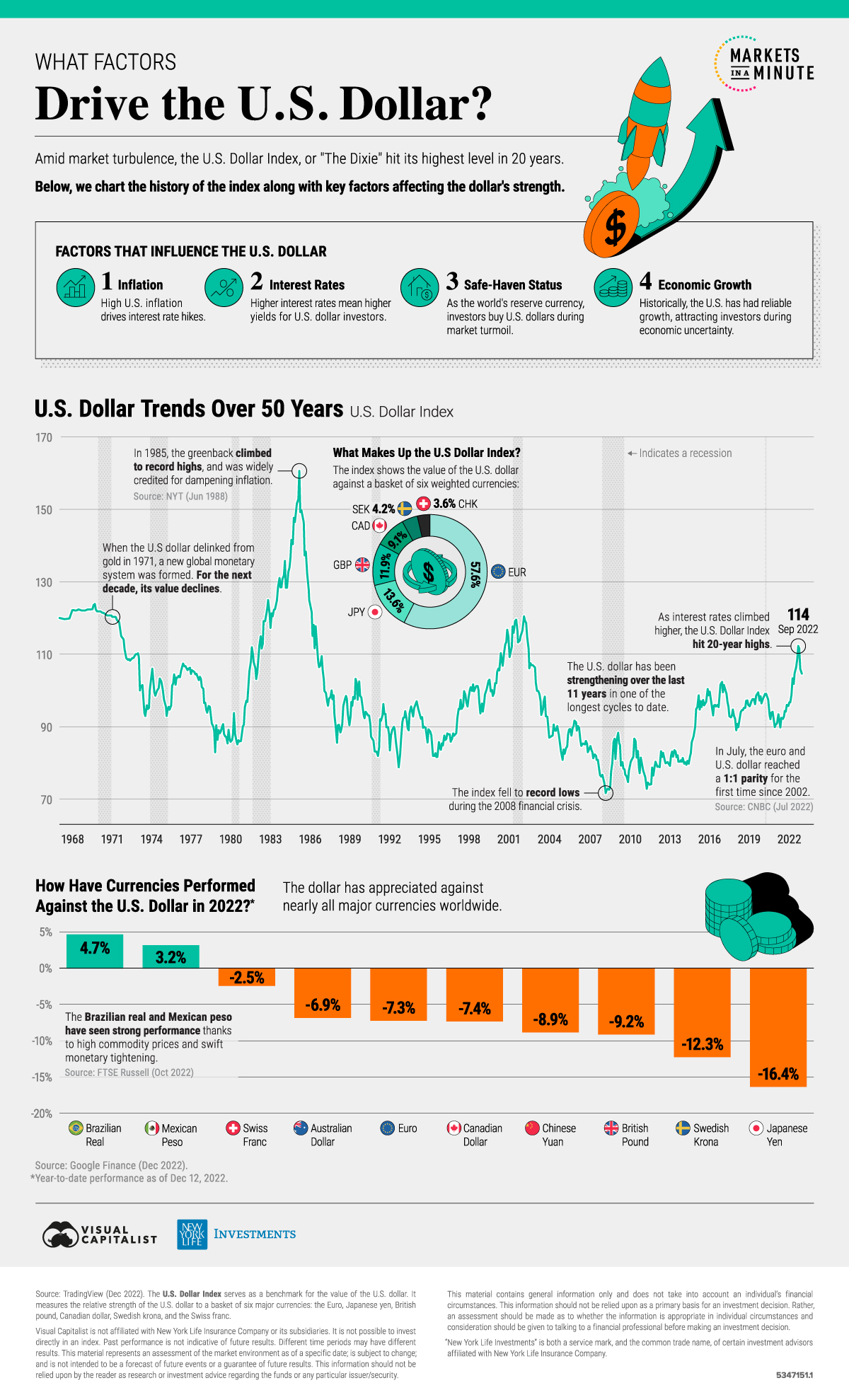
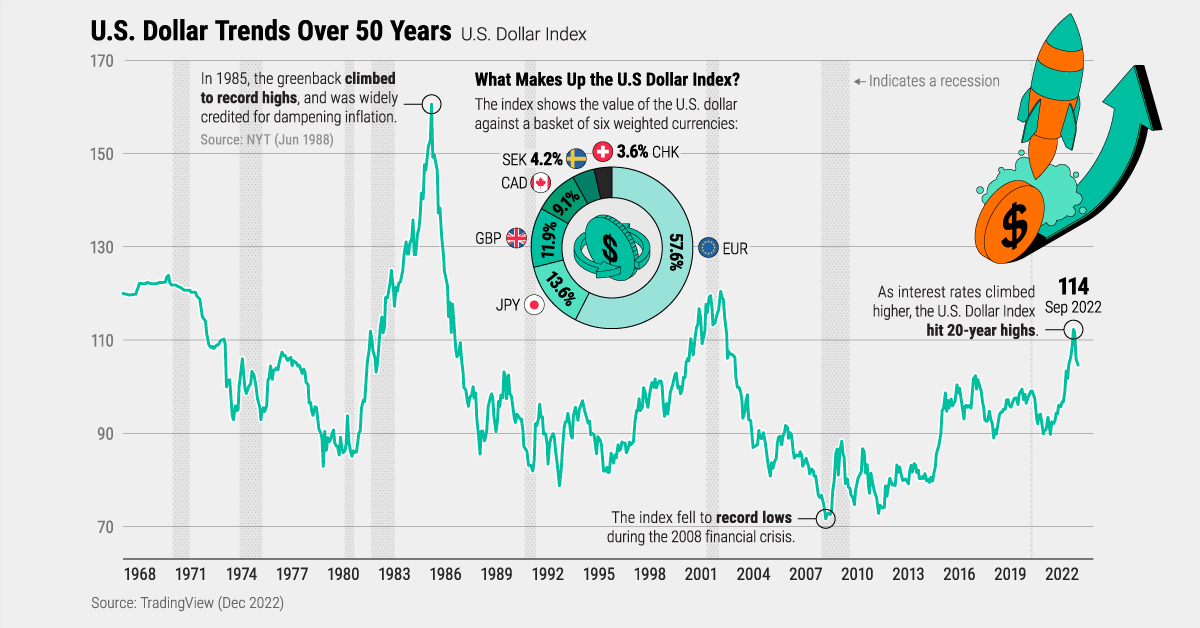

 Infographics2 years ago
Infographics2 years ago
 Markets in a Minute2 years ago
Markets in a Minute2 years ago
 Markets in a Minute2 years ago
Markets in a Minute2 years ago
 Infographics2 years ago
Infographics2 years ago
 Markets in a Minute1 year ago
Markets in a Minute1 year ago
 Markets in a Minute2 years ago
Markets in a Minute2 years ago
 Infographics1 year ago
Infographics1 year ago
 Markets in a Minute2 years ago
Markets in a Minute2 years ago





